| Weight | 1 lbs |
|---|---|
| Dimensions | 9 × 5 × 2 in |
| host | mouse |
| isotype | IgG1 |
| clonality | monoclonal |
| concentration | 1 mg/mL |
| applications | ICC/IF, WB |
| reactivity | ALG-2 Interacting Protein-X (ALIX) |
| available sizes | 100 µg |
mouse anti-ALG-2 Interacting Protein-X (ALIX0) monoclonal antibody (8E8) 9112
$520.00
Antibody summary
- Mouse monoclonal to ALG-2 Interacting Protein-X (ALIX)
- Suitable for: WB,IHC
- Isotype: IgG1
- 100 µg
mouse anti-ALG-2 Interacting Protein-X (ALIX0) monoclonal antibody (8E8) 9112
| antibody |
|---|
| Tested applications WB,IHC,IHC |
| Recommended dilutions Immunoblotting: use at 1-5ug/ml. A band of ~96kDa is detected. Immunohistochemistry: use at 5- 10ug/ml. These are recommended concentrations. End user should determine optimal concentrations for their applications. |
| Immunogen Recombinant human ALIX protein. |
| Size and concentration 100µg and |
| Form lyophilized |
| Storage Instructions This product is stable for at least one (1) year at -20°C to -70°C. Reconstituted product should be stored in appropriate aliquots to avoid repeated freeze-thaw cycles. |
| Storage buffer Lyophilized, 0.1M Tris, 0.1M glycine, 2% sucrose |
| Purity protein affinity purification |
| Clonality monoclonal |
| Isotype IgG1 |
| Compatible secondaries goat anti-mouse IgG, H&L chain specific, peroxidase conjugated polyclonal antibody 5486 goat anti-mouse IgG, H&L chain specific, biotin conjugated, Conjugate polyclonal antibody 2685 goat anti-mouse IgG, H&L chain specific, FITC conjugated polyclonal antibody 7854 goat anti-mouse IgG, H&L chain specific, peroxidase conjugated polyclonal antibody, crossabsorbed 1706 goat anti-mouse IgG, H&L chain specific, biotin conjugated polyclonal antibody, crossabsorbed 1716 goat anti-mouse IgG, H&L chain specific, FITC conjugated polyclonal antibody, crossabsorbed 1721 |
| Isotype control Mouse monocolonal IgG1 - Isotype Control |
| target relevance |
|---|
| Protein names Programmed cell death 6-interacting protein (PDCD6-interacting protein) (ALG-2-interacting protein 1) (ALG-2-interacting protein X) (Hp95) |
| Gene names PDCD6IP,PDCD6IP AIP1 ALIX KIAA1375 |
| Mass 96023Da |
| Function FUNCTION: Multifunctional protein involved in endocytosis, multivesicular body biogenesis, membrane repair, cytokinesis, apoptosis and maintenance of tight junction integrity. Class E VPS protein involved in concentration and sorting of cargo proteins of the multivesicular body (MVB) for incorporation into intralumenal vesicles (ILVs) that are generated by invagination and scission from the limiting membrane of the endosome. Binds to the phospholipid lysobisphosphatidic acid (LBPA) which is abundant in MVBs internal membranes. The MVB pathway requires the sequential function of ESCRT-O, -I,-II and -III complexes (PubMed:14739459). The ESCRT machinery also functions in topologically equivalent membrane fission events, such as the terminal stages of cytokinesis (PubMed:17556548, PubMed:17853893). Adapter for a subset of ESCRT-III proteins, such as CHMP4, to function at distinct membranes. Required for completion of cytokinesis (PubMed:17556548, PubMed:17853893, PubMed:18641129). May play a role in the regulation of both apoptosis and cell proliferation. Regulates exosome biogenesis in concert with SDC1/4 and SDCBP (PubMed:22660413). By interacting with F-actin, PARD3 and TJP1 secures the proper assembly and positioning of actomyosin-tight junction complex at the apical sides of adjacent epithelial cells that defines a spatial membrane domain essential for the maintenance of epithelial cell polarity and barrier (By similarity). {ECO:0000250|UniProtKB:Q9WU78, ECO:0000269|PubMed:14739459, ECO:0000269|PubMed:17556548, ECO:0000269|PubMed:17853893, ECO:0000269|PubMed:18641129, ECO:0000269|PubMed:22660413}.; FUNCTION: (Microbial infection) Involved in HIV-1 virus budding. Can replace TSG101 it its role of supporting HIV-1 release; this function requires the interaction with CHMP4B. The ESCRT machinery also functions in topologically equivalent membrane fission events, such as enveloped virus budding (HIV-1 and other lentiviruses). {ECO:0000269|PubMed:14505569, ECO:0000269|PubMed:14505570, ECO:0000269|PubMed:14519844, ECO:0000269|PubMed:17556548, ECO:0000269|PubMed:18641129}. |
| Subellular location SUBCELLULAR LOCATION: Cytoplasm, cytosol {ECO:0000250|UniProtKB:Q9QZA2}. Melanosome {ECO:0000269|PubMed:17081065}. Cytoplasm, cytoskeleton, microtubule organizing center, centrosome {ECO:0000269|PubMed:17556548, ECO:0000269|PubMed:17853893}. Secreted, extracellular exosome {ECO:0000269|PubMed:22660413}. Cell junction, tight junction {ECO:0000250|UniProtKB:Q9WU78}. Midbody, Midbody ring {ECO:0000269|PubMed:17853893, ECO:0000269|PubMed:18641129}. Note=Identified by mass spectrometry in melanosome fractions from stage I to stage IV. Colocalized with CEP55 at centrosomes of non-dividing cells. Component of the actomyosin-tight junction complex (By similarity). PDCD6IP targeting to the midbody requires the interaction with CEP55 (PubMed:18641129). {ECO:0000250|UniProtKB:Q9QZA2, ECO:0000250|UniProtKB:Q9WU78, ECO:0000269|PubMed:17081065, ECO:0000269|PubMed:17556548, ECO:0000269|PubMed:17853893, ECO:0000269|PubMed:18641129}. |
| Structure SUBUNIT: Self-associates (PubMed:14505570, PubMed:14519844). Interacts with SH3KBP1/CIN85 (By similarity). Interacts with PDCD6 in a calcium -dependent manner (PubMed:16957052, PubMed:18256029, PubMed:18940611). Interacts with TSG101 in a calcium-dependent manner; PDCD6IP homooligomerization may be required for TSG101-binding (PubMed:14505570, PubMed:14519844, PubMed:17350572, PubMed:18641129, PubMed:19520058). Interacts with SGSM3 (PubMed:15849434). Directly interacts with CHMP4A, CHMP4B and CHMP4C (PubMed:12860994, PubMed:14505569, PubMed:14505570, PubMed:14519844, PubMed:14583093, PubMed:14678797, PubMed:17350572, PubMed:17428861, PubMed:18511562). Directly interacts with CEP55 in a 1:2 stoechiometry (PubMed:17556548, PubMed:17853893, PubMed:18641129, PubMed:18948538). The interaction with CEP55 is required for PDCD6IP targeting to the midbody (PubMed:18641129). May interact with PDGFRB (PubMed:20494825). Interacts with SH3GL1 and SH3GL2/endophilin-1 (PubMed:17350572). Forms a complex with SDCBP and SDC2 (PubMed:22660413). Found in a complex with F-actin, TJP1/ZO-1 and PARD3 (By similarity). Interacts with CD2AP (PubMed:17853893). Interacts with ARRDC1 (PubMed:21191027). Interacts (via BRO1 domain) with the ATG12-ATG3 conjugate; this interaction is bridged by ATG12 and promotes multiple PDCD6IP-mediated functions such as endolysosomal trafficking, macroautophagy and exosome biogenesis (PubMed:25686249). {ECO:0000250|UniProtKB:Q9QZA2, ECO:0000250|UniProtKB:Q9WU78, ECO:0000269|PubMed:12860994, ECO:0000269|PubMed:14505569, ECO:0000269|PubMed:14505570, ECO:0000269|PubMed:14519844, ECO:0000269|PubMed:14583093, ECO:0000269|PubMed:14678797, ECO:0000269|PubMed:15849434, ECO:0000269|PubMed:16957052, ECO:0000269|PubMed:17350572, ECO:0000269|PubMed:17428861, ECO:0000269|PubMed:17556548, ECO:0000269|PubMed:17853893, ECO:0000269|PubMed:18256029, ECO:0000269|PubMed:18511562, ECO:0000269|PubMed:18641129, ECO:0000269|PubMed:18940611, ECO:0000269|PubMed:18948538, ECO:0000269|PubMed:19520058, ECO:0000269|PubMed:20494825, ECO:0000269|PubMed:21191027, ECO:0000269|PubMed:22660413, ECO:0000269|PubMed:25686249}.; SUBUNIT: (Microbial infection) Interacts with HIV-1 p6 (PubMed:14505569, PubMed:17277784, PubMed:17350572, PubMed:18066081). Interacts with HIV-1 p9 (PubMed:18066081). {ECO:0000269|PubMed:14505569, ECO:0000269|PubMed:14519844, ECO:0000269|PubMed:17277784, ECO:0000269|PubMed:17350572, ECO:0000269|PubMed:18066081}.; SUBUNIT: (Microbial infection) Interacts with EIAV p9. {ECO:0000269|PubMed:14505569, ECO:0000269|PubMed:14519844, ECO:0000269|PubMed:17350572, ECO:0000269|PubMed:18066081}.; SUBUNIT: (Microbial infection) Interacts with Murine leukemia virus Gag polyprotein (via LYPX(n)L motif). {ECO:0000269|PubMed:15908698}.; SUBUNIT: (Microbial infection) Interacts with ebola virus protein VP40 (via YPx(n)L/I motif). {ECO:0000269|PubMed:15908698}. |
| Post-translational modification PTM: May be phosphorylated on tyrosine residues by activated PDGFRB. {ECO:0000269|PubMed:20494825}. |
| Involvement in disease DISEASE: Microcephaly 29, primary, autosomal recessive (MCPH29) [MIM:620047]: A form of microcephaly, a disease defined as a head circumference more than 3 standard deviations below the age, sex and ethnically matched mean. Brain weight is markedly reduced and the cerebral cortex is disproportionately small. MCPH29 is characterized by small head circumference apparent at birth and associated with global developmental delay, impaired intellectual development, speech delay, and behavioral abnormalities. Affected individuals also have poor overall growth with short stature, mild dysmorphic facial features, and seizures. {ECO:0000269|PubMed:32286682}. Note=The disease may be caused by variants affecting the gene represented in this entry. |
| Target Relevance information above includes information from UniProt accession: Q8WUM4 |
| The UniProt Consortium |
Data
| No results found |
Publications
| pmid | title | authors | citation |
|---|---|---|---|
| We haven't added any publications to our database yet. | |||
Protocols
| relevant to this product |
|---|
| Western blot IHC |
Documents
| # | SDS | Certificate | |
|---|---|---|---|
| Please enter your product and batch number here to retrieve product datasheet, SDS, and QC information. | |||
Only logged in customers who have purchased this product may leave a review.
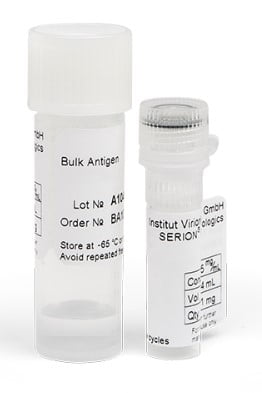
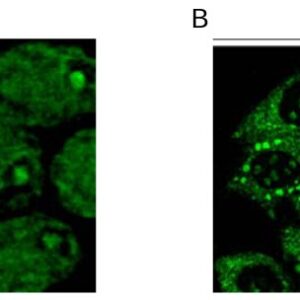

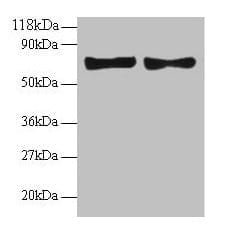
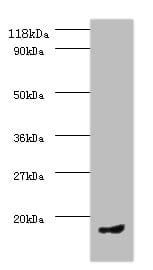

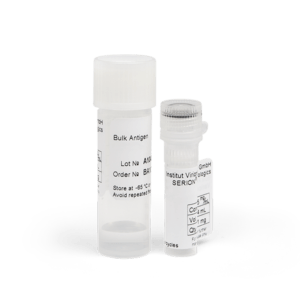

Reviews
There are no reviews yet.